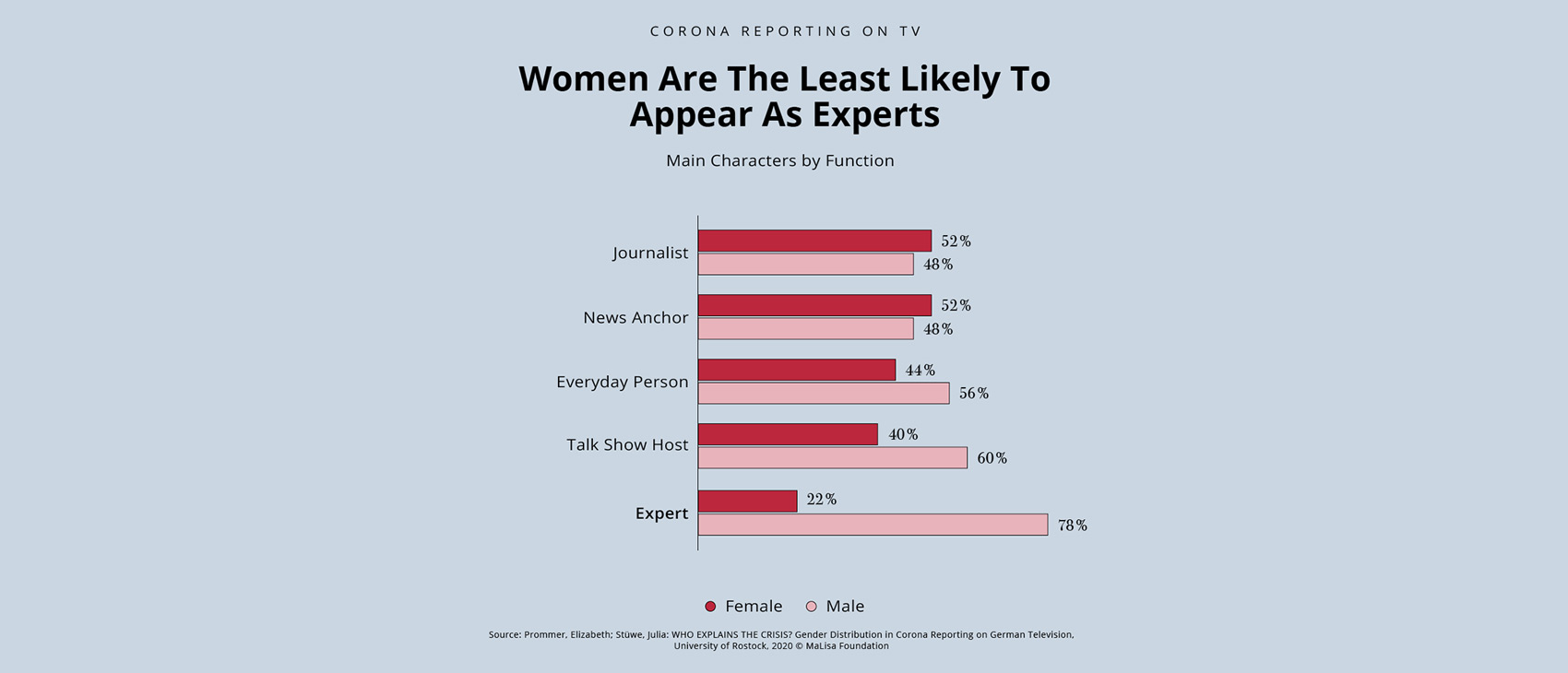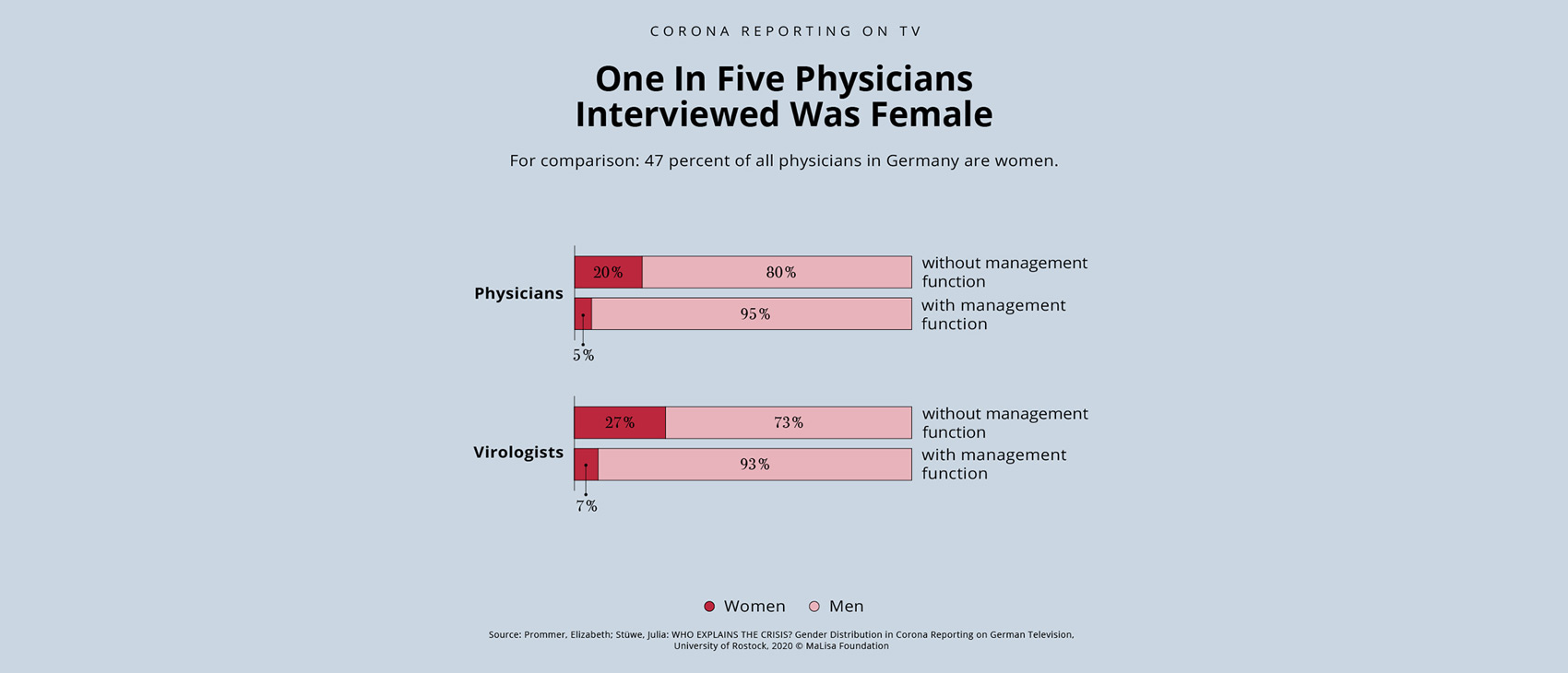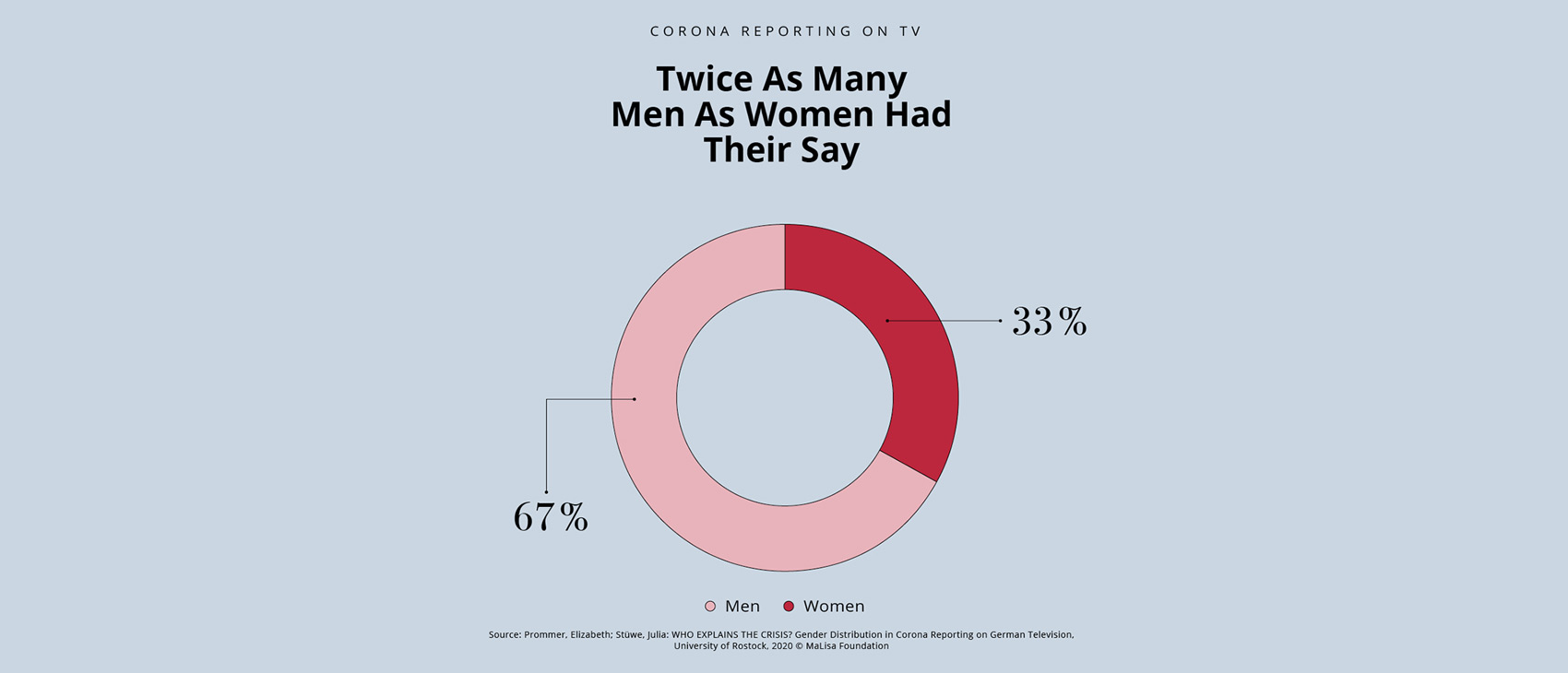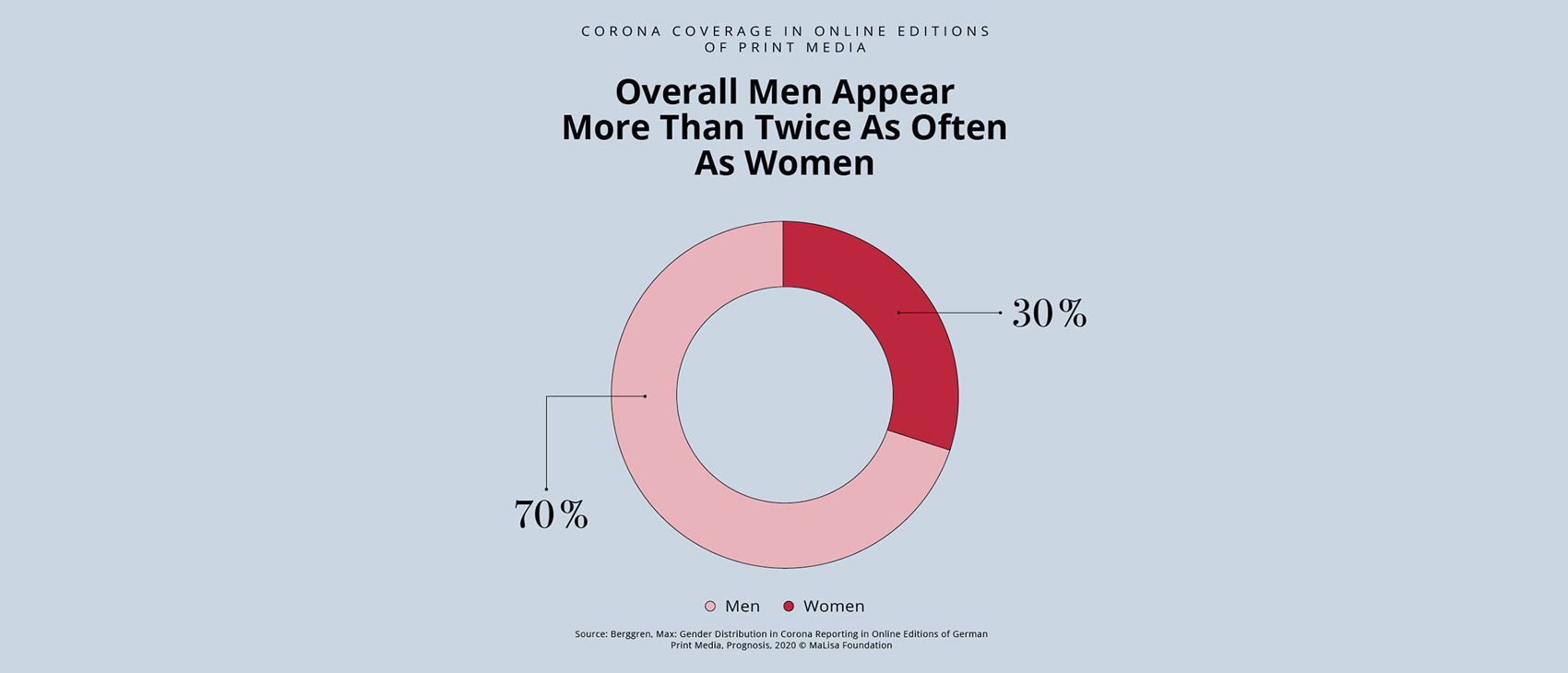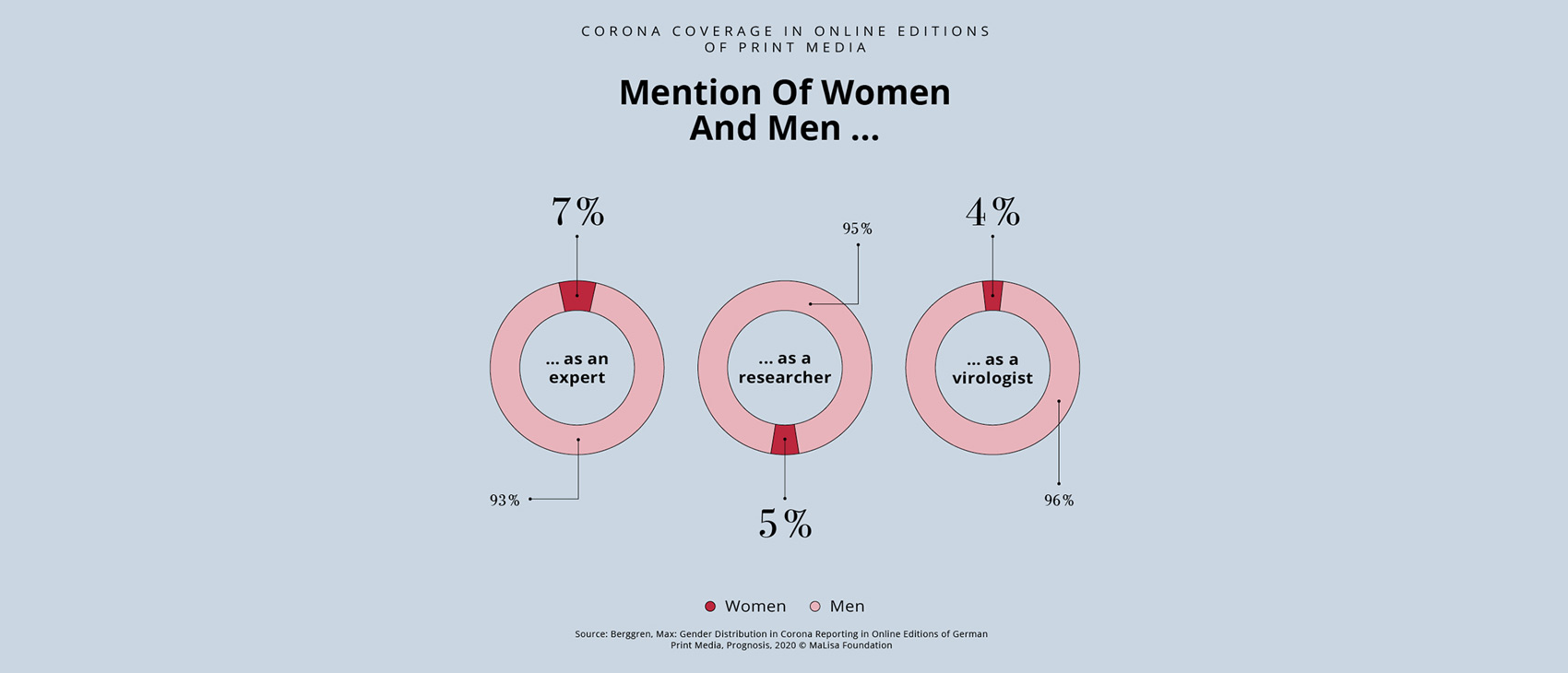GENDER DISTRIBUTION IN CORONA REPORTING
WHO EXPLAINS THE CRISIS?
What is the status of gender justice in Corona reporting on television and in the online editions of print media in Germany? How often do women and men have their say? How often and on which topics are they asked as experts? Two studies of the MaLisa Foundation investigate these questions.
The Corona / COVID-19 pandemic, which has also affected Germany since March 2020, impacts all areas of life. The different effects of the crisis on women and men become clear. This also concerns the media coverage of the health crisis in Germany.
In order to analyze this extraordinary situation, the MaLisa Foundation has commissioned two studies: Prof. Dr. Elizabeth Prommer and Julia Stüwe from the Institute for Media Research at the University of Rostock have examined television reporting. The data researcher and founder of the Gender Equality Tracker, Max Berggren, evaluated the reports in the online editions of print media.
For the TV coverage, the Rostock researchers analyzed information programs with Corona-related content that were broadcast between 16 and 30 April 2020. Max Berggren evaluated the reports in the online editions of thirteen print media for the same period.
The complete results of the studies can be found here (in German).
SUMMARY OF THE KEY FINDINGS
- In TV information programs, only one in five experts was female (22%). In online reporting, only about 7% of the mentioned experts were women.
- The majority of the physicians asked as experts were men – although almost half of all physicians in Germany are in fact female. Only one in five of the physicians without a management function who were interviewed on TV was female.
- In total, both TV reporting and online editions of print media featured twice as many men as women.
THE RESEARCH RESULTS IN DETAIL:
EXPERTS IN TV INFORMATION PROGRAMS
1. Across all topics, the ratio of female to male experts was one in five.
- The expertise of women was least in demand in news and special programs on COVID-19. Here, 80 percent of the experts were male. Female experts were somewhat more frequently featured on talk shows, however still at a ratio of less than one out of four (28% compared to 72%).
- Even in the areas of care/nursing and medicine, in which the workforce consists of women predominantly, only 17% of the experts interviewed were female, which was among the lowest representation of women across all topics.
- Women were most frequently consulted as experts in the areas of education (45%) and social affairs (31%).
2. Only one out of five physicians without a management function in practices and clinics was female.
- Among physicians and researchers in leading positions (such as heads of institutes or labs), the proportion of women was only 5 percent.
- Among the virologists without a management function who were interviewed, the proportion of women was 27 percent, among those with a management function only 7 percent. In the field of epidemiology and infection research, 94 percent of interviewees without management positions were male.
- By comparison, women accounted for 47 percent of all physicians in Germany in 2018. In the field of virology, epidemiology of infections and microbiology, the proportion of women is similarly high (45 percent). Quelle: Source: destatis / Federal Health Reporting (GBE) 2018
3. Overall, twice as many men as women had their say (67% compared to 33%).
- In news and talk shows, 30 percent of the main characters were female, in special COVID-19 programs 33 percent.
- In magazine programs and documentaries, 41 percent of the main characters were women.
- Among journalists, reporters and news presenters, the proportion of women in the programs (52 percent) roughly matched their proportion in the population. In the other categories, the percentage of women was significantly lower.
Methodology
- TV stations examined: ARD – Das Erste, ZDF, RTL, Sat.1
- Programs examined: Information programs from 6 pm (news, special Corona / COVID-19 coverage, talk shows, magazines and documentaries). A total of 174 Corona-related programs were analyzed.
- Persons examined: Main characters were coded (2,240 in total). These included media professionals (journalists, reporters, news presenters and talk show hosts) as well as experts and everyday people who were centrally visible, and who were mentioned by name.
- The data for the total of 1,299 experts, who were introduced as such in the programs on various topics with a Corona reference, are listed separately in the results.
- Non-binary, diverse or other gender identities were also counted. Since their share was zero percent, they do not appear in the further processing of the results
REPORTING IN ONLINE EDITIONS OF PRINT MEDIA
- Overall, in the Corona-related reports in the online editions of print media that were part of the analysis, the share of women was around 30 percent, whilst the share of men was around 70 percent.
- Of experts mentioned in the online reports, only about 7 percent were female. The proportion of females among featured researchers was at around 5 percent, and among virologists, it was at 4 percent.
Methodology
- Analysis of Corona-related reports in the online editions of 13 print media (Frankfurter Allgemeine Zeitung, Focus, Frankfurter Rundschau, Handelsblatt, Neues Deutschland, Nordbayern-Kurier, Spiegel, Stern, Stuttgarter Nachrichten, Süddeutsche Zeitung, Tagesspiegel, taz, Welt).
- A total of 79,807 articles were examined.
- In an automated analysis, the persons named in the Corona-specific reporting from 16 to 30 April 2020 were recorded according to gender.
- In addition, the frequency of occurrence of the following German terms (broken down by gender and by singular and plural) in the reports with a corona reference was determined: Expert(s), virologist(s) and researcher(s).
GRAPHS OF THE STUDIES:
CORONA REPORTING ON TV
CORONA COVERAGE IN ONLINE EDITIONS OF PRINT MEDIA
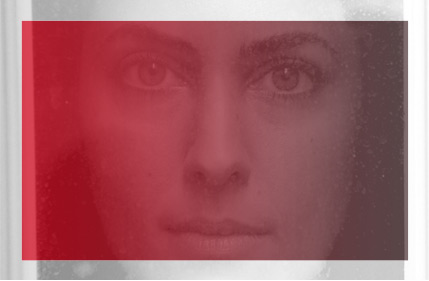
GENDER DISTRIBUTION IN CORONA REPORTING
Who explains the crisis?
STUDY „GESCHLECHTERVERTEILUNG IN DER CORONA BERICHTERSTATTUNG“ (IN GERMAN)Infographics
PRESS RELEASE (IN GERMAN)
